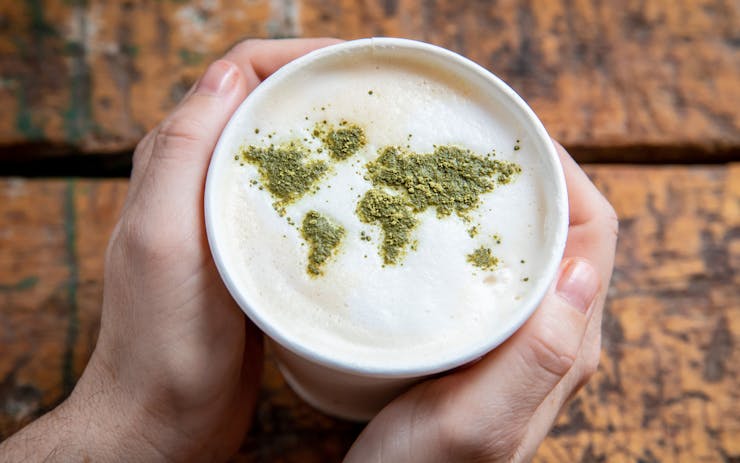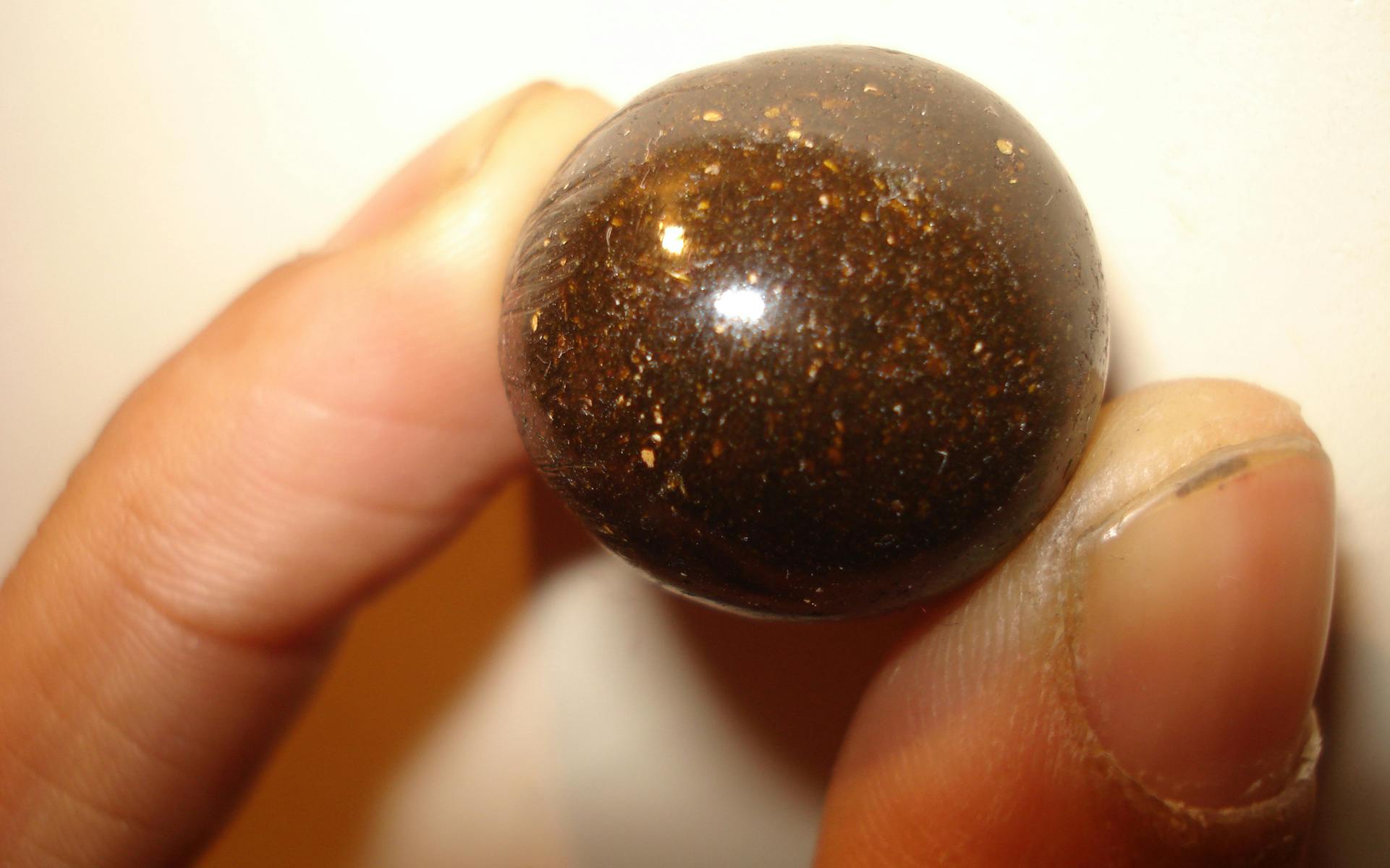Sure, smoking weed is fun. You feel the effects almost immediately, and it’s the standard way to get high.
But this wasn’t always so.
Eating weed (most often hash) was de rigueur for thousands of years, and is poised to make a massive comeback as laws relax and legal edibles flood the marketplace. To give us a sense of what our pot-loving ancestors were chewing on, we asked Robyn Lawrence Griggs, author of Pot in Pans: A History of Eating Cannabis (2019), to tell us more about some notable edibles throughout history.
Middle Stone[r] Age
Eating cannabis goes way back, about 50,000 years, to when early humans were wandering around, stuffing whatever they could find in their mouths in the hopes that it was nutritious. One such lucky woman or man eventually popped a cannabis flower in their mouth, licked sticky resin off their fingers, got high, and (presumably later that day) told all their friends.
“Ethnobotanists believe it was one of the first plants they explored,” explains Lawrence, who says from those early days we stepped into the Neolithic period, where humans actively cultivated cannabis (among other plants) for food, fibre and medicine—and a good body buzz.
What’s significant about Stone Age cannabis consumption is it coincides with what anthropologists call the “great leap” forward: “Music, art, religion and agriculture—it all began at a time we can link to cannabis consumption,” says Lawrence.
And there’s science to prove it: the part of the brain where the FOXP2 gene occurs is associated with speech, language, and creativity, is activated by cannabis. “Great ideas were born from eating resin-y flowers,” she remarks.
Ancient India and the Islamic Golden Age
Mahjoun (sometimes “majoun” or “majoon”) is a hash-filled confection not unlike the Medjool date energy balls all over Pinterest, and was once widely prevalent across ancient India and the Middle East. What she calls “the origin of edibles,” Lawrence explains mahjoun is hash rolled up with a variety of spices, sweeteners, and other ingredients.Mahjoun is hash rolled up with a variety of spices, sweeteners, and other ingredients.
Starting out in Persia, it eventually made its way over to India and, by 1100 CE, both cultures were getting high off these chewy treats. “The Indian mahjoun was a sweet; it was super spicy and buttery, and it was delicious, more of a food,” she says. “In Persia it was more or less street hash; they would mix it with sesame and sugar, but it was super strong—a lot of times it was mixed with a plant called datura [also known as jimsonweed], which is not a fun high at all.”
If “mahjoun” seems to have negative connotations, it’s not just you: there’s a prevailing legend from the 11th century of The Old Man in the Mountain, named Hassan-ibn-Sabbah, who controlled his legion of blood-thirsty assassins by feeding them mahjoun.
Lawrence says even the word hash comes from hashishine, the Persion word for “assassin”, which is unfortunate. “If there was even anything to this myth it was probably the datura or some other strong substance, not the hash, that was making them do that bidding.”
But over in India, mahjoun was just something fun and celebratory to enjoy, along with potent hash wafers called charas, and a hash drink called bhang, which by the 12th century was a customary beverage to serve guests, and also given to warriors before battle.
When the United States forced the world to outlaw cannabis in the 1970s, Indian mahjoun and charas went underground, but according to Lawrence, because bhang was enjoyed by the wealthy upper class, the rich managed to keep it legal into today. Now the bhang lassi, a marijuana-infused yogurt drink made with honey and spices, can still be enjoyed just about anywhere in India.
As for the Middle Eastern mahjoun, it never went away, but has evolved into a mellow, murder-free confection.
Medieval times
There are many written references of cannabis as medicine in the centuries leading up to today, but it’s harder to say how people were eating their weed in everyday kitchens.
Surviving folk recipes, however, give us a glimpse: Lawrence writes of a traditional confection from Uzbekistan called guc-kand made from cannabis, sugar, saffron, and egg whites, given to baby boys to ward off pain during circumcision, or eaten by women to put them in a (wink, wink) “happy mood;” for men there was (nudge, nudge) “joy porridge” made from almond butter, cannabis, spices, honey, and sugar.
Lawrence writes Cambodia used cannabis as a seasoning in Khmer foods for centuries, and it’s still an important ingredient for their “happy soup” served at weddings. Further south in the Aceh region of Indonesia, the Acehnese use cannabis liberally in cooking as well as in their dodol aceh, a toffee-like candy. There’s also khylos from Greece: green cannabis seeds steeped in wine for days.
For Lawrence, one of her favourite folk recipes is a Polish snack: “It calls for crushing cannabis seeds and mixing them with salt, a little bit of oil and butter, then spreading on crusty bread,” she says.
The 1800s
Many prolific European and American writers were eating hash in this century, largely based on Middle Eastern mahjoun.Hashish mania.
The influencers of their time, these writers inspired what Lawrence calls “hashish mania” among the elites. In her book she writes Le Club des Hashishins was formed in Paris by an eccentric French psychiatrist who invited artists and literary giants to consume dawamesk, a variant of mahjoun he learned to make in Algiers that included Spanish Fly and possibly opium.
Meanwhile in America, Lawrence writes a “majoon” lozenge in New York made with datura seeds and opium was being consumed by “the better classes”. For the other 99%, the Gunjah Wallah Company was producing hash-based maple candies nationwide.
But by the turn of the century, negative public opinion was forming against hash consumption, and the candy production stopped.
The 1900s
In Jamaica, the Rastafarian ital diet, stemming from “vital,” avoids processed food, meat, sugar, dairy, and alcohol in favour of fresh fruits and vegetables (not unlike the Whole30 craze, but with weed). Cannabis is still central to Rastafarian cuisine today.
Mahjoun also made a massive comeback in the last century, but in an unexpected way. Alice B. Toklas, author of the 1954 sensation The Alice B. Toklas Cookbook, put together her collection of recipes based on her life in Paris with lover and literary luminary, Gertrude Stein. To fill the book she reached out to friends from the era.
One—Canadian artist Brion Gysin—slipped in a recipe for mahjoun, which he called “Hashish Fudge,” and it made Alice’s book famous. “Her friend Brion said he did it because he knew she was broke; she had hepatitis and she needed money, and he wanted to make her cookbook really popular,” says Lawrence.
It worked. And thanks to a scene in the 1968 film I Love You, Alice B. Toklas!, the fudge turned into brownies. Then, in the early 1970s, activist Mary Rathbun, a.k.a. Brownie Mary, began selling her legendary pot brownies in San Francisco. Lawrence says she largely evaded arrest until 1992, when the DEA reported every confiscated ingredient, including 20 pounds of cannabis and 35 pounds of margarine, not butter. “The thing I love is she was not even upset they revealed her recipe, but she was really pissed they said she used margarine,” laughs Lawrence. “She was like ‘Put me in jail for cannabis, but I will never use margarine!’”
Meanwhile, American tourists began searching for pot brownies in Jamaica, where locals were more than happy to sell them, but it wasn’t something they ate themselves. And in the Netherlands, the first cannabis coffee shop opened in 1972—mostly because entrepreneurial hippies were already squatting in one—where they sold cannabis-infused sweets they called “space cakes.”
2020 and beyond
“Since I really started paying attention to cannabis edibles in 2009, there’s been such a big change in terms of what’s available,” says Lawrence. Looking ahead, one thing she keeps hearing about is “sessionable”: taken from the beer industry, it’s all about consuming edibles within a reasonable time period without getting overly intoxicated. “I think you’re going to see more and more products fitting into that sessionable kind of idea,” she says.
However, she’s not looking forward to synthetic CBD and THC, which she says will be a cheaper alternative for food and beverage manufacturers.
“They can create [CBD and THC] from organic hosts, like yeast or sugar, which in my mind is preferable,” she says. “But they’re also going to be making them from petroleum-based chemicals, which is pretty inevitable. I think it’s something we’re just going to accept as progress in the industry.”






